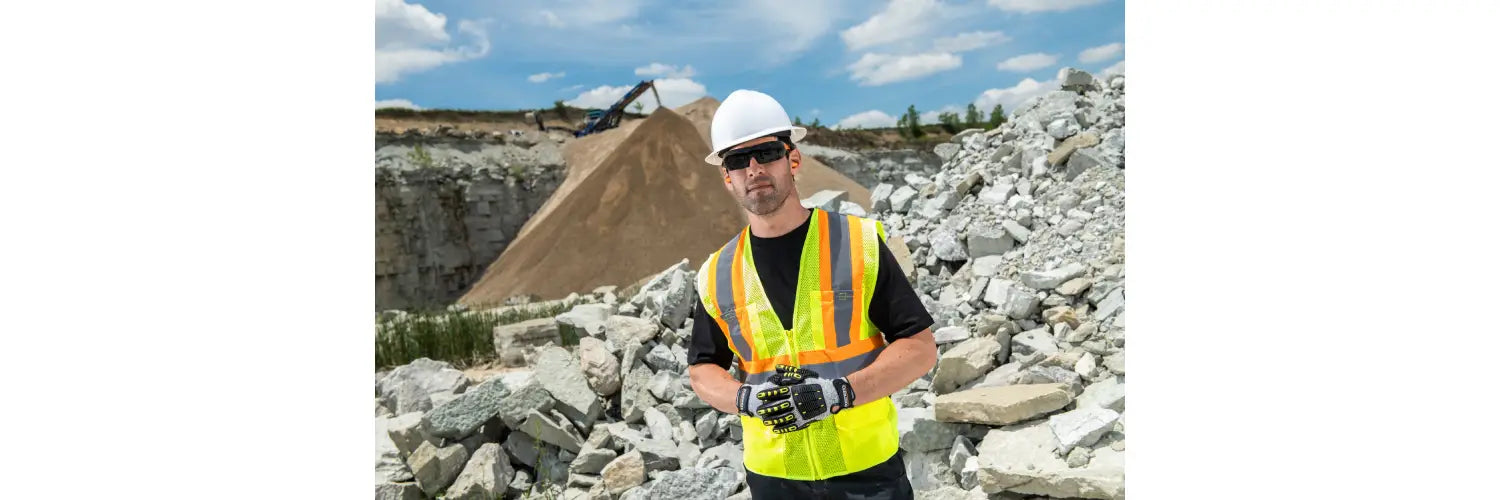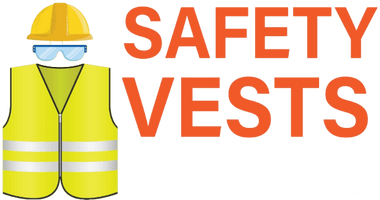
The Purpose of Safety Vests
Safety vests are a fundamental piece of personal protective equipment (PPE) across various industries and settings. While they may seem simple, their purpose goes far beyond just making someone visible. In this blog, we'll explore the key reasons why safety vests are so important, the different types available, and the various sectors where they play a critical role.
Why Safety Vests Are Essential
-
Enhanced Visibility
The most obvious purpose of a safety vest is to make the wearer more visible, particularly in environments where there’s a mix of pedestrians and vehicles or machinery. These vests are often made in high-visibility colors, such as fluorescent yellow or orange, and are equipped with reflective strips. This makes workers or individuals stand out both in daylight and low-light conditions, such as during dawn, dusk, or nighttime.
In high-risk environments, such as construction sites, roadwork zones, or event management at night, wearing a high-visibility safety vest ensures that others—especially drivers and equipment operators—can see workers from a distance and prevent potential accidents. -
Accident Prevention
Safety vests don’t just make people visible; they help reduce accidents. On construction sites, for example, workers often operate heavy machinery in crowded areas. A bright, reflective vest helps operators notice their coworkers more easily, lowering the risk of collisions or injuries. This is especially true for industries like mining, road construction, and traffic management, where the risk of accidents is significantly higher. -
Compliance with Safety Regulations
Many industries are required by law to ensure their workers wear safety vests to meet health and safety standards. In countries like the United States, the Occupational Safety and Health Administration (OSHA) sets regulations requiring high-visibility gear for employees working in areas where they may be struck by vehicles or machinery. These rules are essential to maintaining safe work environments, and employers who fail to comply can face significant fines. -
Role Identification
In certain work environments, safety vests can help distinguish roles. For example, on a construction site, supervisors, engineers, and first responders might wear different colored vests to set them apart from general workers. In event management, security personnel might wear distinct vests to stand out from other staff. This color-coded system can simplify communication and ensure that the right people are easily identifiable in emergencies. -
Weather and Environmental Protection
Some safety vests are designed with added functionality to protect workers from the environment. For example, reflective winter vests are insulated to keep workers warm while maintaining visibility in cold, low-light conditions. In wet or rainy environments, waterproof vests ensure that workers stay dry and visible, making them versatile and adaptable to various working conditions.
Types of Safety Vests
-
Class 1 Safety Vests
These vests are typically used in low-risk environments where traffic speed does not exceed 25 mph, such as parking attendants, warehouse workers, or delivery personnel. They usually have minimal reflective tape and are worn where visibility needs are lower. -
Class 2 Safety Vests
Class 2 vests are for higher-risk environments, such as roads with traffic traveling up to 50 mph, or in areas with heavy equipment. Construction workers, road crew members, and airport ground crew workers typically wear Class 2 vests. They have more reflective material than Class 1 vests. -
Class 3 Safety Vests
These are the highest level of visibility gear, designed for the most dangerous work environments, where workers are close to fast-moving traffic or operate in very low-light conditions. These vests cover more of the body and have the highest amount of reflective tape. Highway construction workers and emergency responders often wear Class 3 vests. -
Custom Safety Vests
Many industries require specialized safety vests with added features such as extra pockets, radio holders, or logos. These are common in emergency response, construction, and outdoor event management, where workers need to carry specific tools and still remain highly visible.
Where Safety Vests Are Used
- Construction Sites Workers in construction are often exposed to moving vehicles, heavy equipment, and hazardous conditions. Safety vests ensure they are easily seen, reducing the risk of accidents.
- Roadwork and Traffic Control Traffic safety workers are constantly exposed to fast-moving vehicles. Safety vests allow them to direct traffic or work on road repairs safely, ensuring drivers can see them well in advance.
- Warehouse and Manufacturing In warehouses or factories, where forklifts and other equipment are constantly moving, safety vests make workers visible and help prevent collisions in narrow or cluttered spaces.
- Emergency Responders Police officers, firefighters, and paramedics often need high-visibility gear, especially when responding to accidents at night or in chaotic environments. Their reflective vests make it easy for other emergency personnel and the public to recognize their role and location quickly.
- Event Management For crowd control or outdoor events, event staff wear vests to stand out from attendees. This helps in both managing crowds and addressing any emergency situations swiftly.
Conclusion
Safety vests are more than just bright-colored garments. They are an essential tool for keeping workers safe, preventing accidents, and ensuring compliance with safety regulations. Whether in construction, roadwork, event management, or emergency services, these vests play a critical role in making sure everyone gets home safe at the end of the day.
If you're an employer, investing in high-quality, industry-appropriate safety vests is not just a legal requirement but also a moral responsibility to protect your workforce. Stay safe, stay visible!
